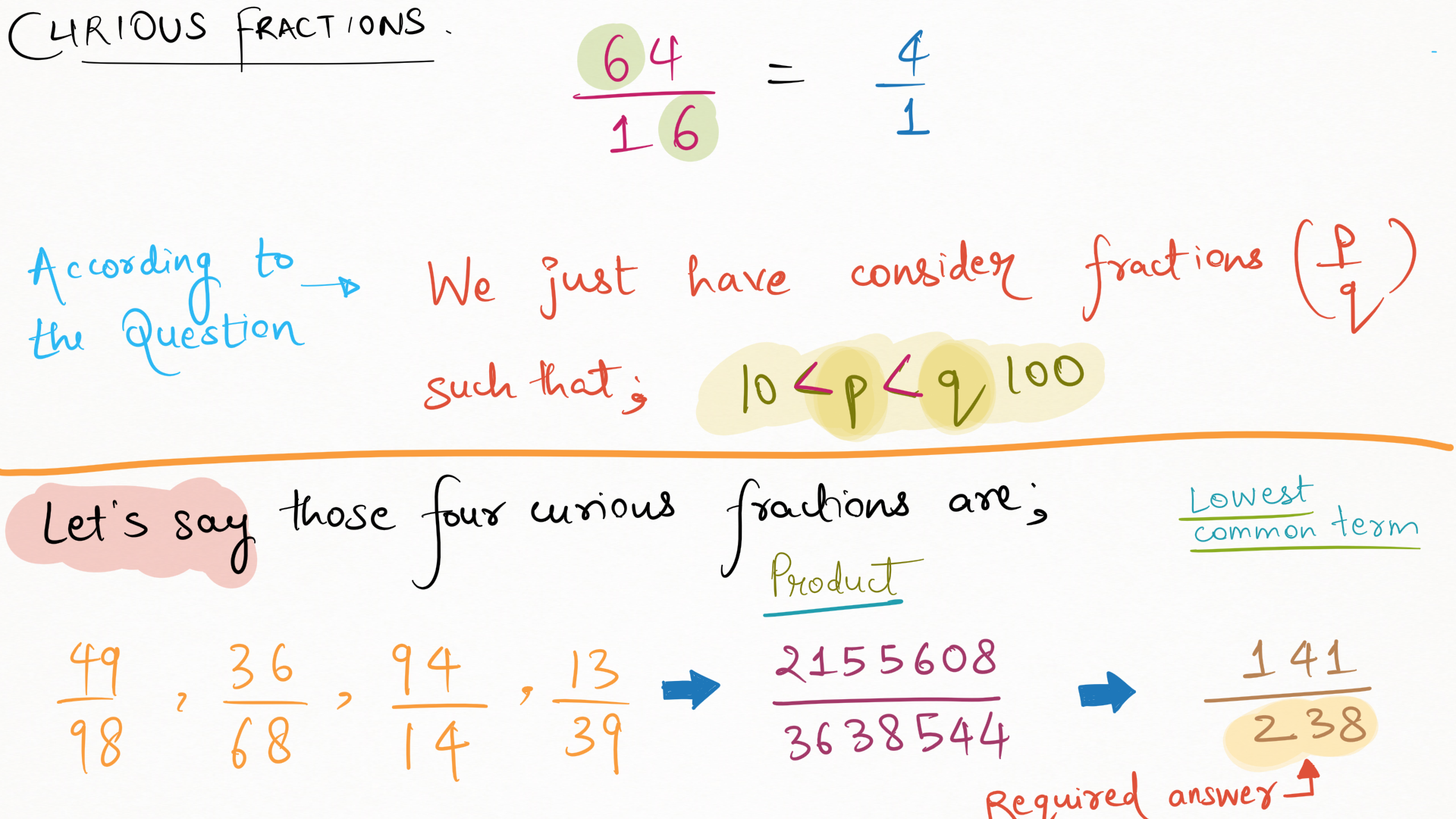Project Euler 33: digit canceling fractions
Problem statement
We have a fraction in which if we cancel the common digit from the numerator and denominator, the fraction thus obtained is an equivalent fraction. This type of fraction is called a curious fraction.
There are indeed only four curious fractions whose actual value is less than one, with two digits in the numerator and denominator.
ex . 49/98 = 4/8
Find the denominator of the product of such fractions when expressed in the lowest terms
Question analysis
Solution
Suppose the following:
p/q = original fraction
i = digit to be cancelled
n/d = remaining fraction
Analyzing cases
After analyzing, we conclude that:
-
Out of four possible conditions, only the fourth condition will be true for a curious fraction less than one.
-
i > d > n
Code
def gcd(a,b):b, a= min((a, b)), max((a, b))if a%b == 0: return b# if any of a or b is odd, then we will skip all odd factorsany_odd = (a|b)%2hcf = 1for j in range(2 + any_odd, b//2 + 1, 1 + any_odd):print('checking',j)if b%j == 0 and a%j == 0:hcf = jreturn hcf# num/den is the multiplication of all curious fraction less than 1num = 1den = 1# i is digit to be cancelledfor i in range(1, 10):# d is remaining digit in denominatorfor d in range(1, i):# n is remaining digit in numeratorfor n in range(1, d):if 10*n*d + i*d == 10*i*n + d*n:num *= 10*n + iden *= 10*i + dcommon_term = gcd(num, den)print(den//common_term)
Free AI Mock Interviews
Coding Interview
Coding PatternsFree Interview
Gain insights and practical experience with coding patterns through targeted MCQs and coding problems, designed to match and challenge your expertise level.
System Design
YouTubeFree Interview
Learn to design a video streaming platform like YouTube by tackling functional and non-functional requirements, core components, and high-level to detailed design challenges.
